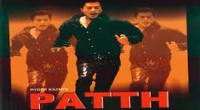This article needs additional citations for verification. (November 2013) (Learn how and when to remove this template message) |

Sunglasses or sun glasses (informally called shades) are a form of protective eyewear designed primarily to prevent bright sunlight and high-energy visible light from damaging or discomforting the eyes. They can sometimes also function as a visual aid, as variously termed spectacles or glasses exist, featuring lenses that are colored, polarized or darkened. In the early 20th century, they were also known as sun cheaters (cheaters being an American slang term for glasses).
The American Optometric Association recommends sunglasses whenever a person is in the sun to protect the eyes from ultraviolet radiation (UV) and blue light, which can cause several serious eye problems. Its usage is mandatory immediately after some surgical procedures, such as LASIK, and recommended for a certain time period in dusty areas, when leaving the house and in front of a TV screen or computer monitor after LASEK. Sunglasses have long been associated with celebrities and film actors primarily from a desire to mask their identity. Since the 1940s, sunglasses have been popular as a fashion accessory, especially on the beach.
Contents
History
Precursors
In prehistoric and historic time, Inuit peoples wore flattened walrus ivory "glasses", looking through narrow slits to block harmful reflected rays of the sun.
It is said that the Roman emperor Nero liked to watch gladiator fights with emeralds. These, however, appear to have worked rather like mirrors. Sunglasses made from flat panes of smoky quartz, which offered no corrective powers but did protect the eyes from glare, were used in China in the 12th century or possibly earlier. Ancient documents describe the use of such crystal sunglasses by judges in ancient Chinese courts to conceal their facial expressions while questioning witnesses.
James Ayscough began experimenting with tinted lenses in spectacles in the mid-18th century, around 1752. These were not "sunglasses" as that term is now used; Ayscough believed that blue- or green-tinted glass could correct for specific vision impairments. Protection from the Sun's rays was not a concern for him. One of the earliest surviving depictions of a person wearing sunglasses is of the scientist Antoine Lavoisier in 1772.
Yellow/amber and brown-tinted spectacles were also a commonly prescribed item for people with syphilis in the 19th and early 20th centuries because sensitivity to light was one of the symptoms of the disease.
Modern developments
In 1913, Crookes lenses were introduced, made from glass containing cerium, which block ultraviolet light. In the early 1920s, the use of sunglasses started to become more widespread, especially among movie stars. Inexpensive mass-produced sunglasses made from celluloid were first produced by Sam Foster in 1929. Foster found a ready market on the beaches of Atlantic City, New Jersey, where he began selling sunglasses under the name Foster Grant from a Woolworth on the Boardwalk. By 1938, Life magazine wrote of how sunglasses were a "new fad for wear on city streets ... a favorite affectation of thousands of women all over the U.S." It stated that 20 million sunglasses were sold in the United States in 1937, but estimated that only about 25% of American wearers needed them to protect their eyes. Polarized sunglasses first became available in 1936, when Edwin H. Land began experimenting with making lenses with his patented Polaroid filter. In 1947, the Armorlite Company began producing lenses with CR-39 resin.
At present, Xiamen, China, is the world's largest producer of sunglasses, with its port exporting 120 million pairs each year.
Functions
Visual clarity and comfort
This section needs additional citations for verification. (November 2013) (Learn how and when to remove this template message) |
Sunglasses can improve visual comfort and visual clarity by protecting the eye from glare.
Various types of disposable sunglasses are dispensed to patients after receiving mydriatic eye drops during eye examinations.
The lenses of polarized sunglasses reduce glare reflected at some angles off shiny non-metallic surfaces, such as water. They allow wearers to see into water when only surface glare would otherwise be seen, and eliminate glare from a road surface when driving into the sun.
Protection
Sunglasses offer protection against excessive exposure to light, including its visible and invisible components.
The most widespread protection is against ultraviolet radiation, which can cause short-term and long-term ocular problems such as photokeratitis, snow blindness, cataracts, pterygium, and various forms of eye cancer. Medical experts advise the public on the importance of wearing sunglasses to protect the eyes from UV; for adequate protection, experts recommend sunglasses that reflect or filter out 99% or more of UVA and UVB light, with wavelengths up to 400 nm. Sunglasses that meet this requirement are often labeled as "UV400". This is slightly more protection than the widely used standard of the European Union (see below), which requires that 95% of the radiation up to only 380 nm must be reflected or filtered out. Sunglasses are not sufficient to protect the eyes against permanent harm from looking directly at the Sun, even during a solar eclipse. Special eyewear known as solar viewers are required for direct viewing of the sun. This type of eyewear can filter out UV radiation harmful to the eyes.
More recently, high-energy visible light (HEV) has been implicated as a cause of age-related macular degeneration; before, debates had already existed as to whether "blue blocking" or amber tinted lenses may have a protective effect. Some manufacturers already design glasses to block blue light; the insurance company Suva, which covers most Swiss employees, asked eye experts around Charlotte Remé (ETH Zürich) to develop norms for blue blocking, leading to a recommended minimum of 95% of the blue light. Sunglasses are especially important for children, as their ocular lenses are thought to transmit far more HEV light than adults (lenses "yellow" with age).
There has been some speculation that sunglasses actually promote skin cancer. This is due to the eyes being tricked into producing less melanocyte-stimulating hormone in the body.
Assessing protection
The only way to assess the protection of sunglasses is to have the lenses measured, either by the manufacturer or by a properly equipped optician. Several standards for sunglasses (see below) allow a general classification of the UV protection (but not the blue light protection), and manufacturers often indicate simply that the sunglasses meet the requirements of a specific standard rather than publish the exact figures.
The only "visible" quality test for sunglasses is their fit. The lenses should fit close enough to the face that only very little "stray light" can reach the eye from their sides, or from above or below, but not so close that the eyelashes smear the lenses. To protect against "stray light" from the sides, the lenses should fit close enough to the temples and/or merge into broad temple arms or leather blinders.
It is not possible to "see" the protection that sunglasses offer. Dark lenses do not automatically filter out more harmful UV radiation and blue light than light lenses. Inadequate dark lenses are even more harmful than inadequate light lenses (or wearing no sunglasses at all) because they provoke the pupil to open wider. As a result, more unfiltered radiation enters the eye. Depending on the manufacturing technology, sufficiently protective lenses can block much or little light, resulting in dark or light lenses. The lens color is not a guarantee either. Lenses of various colors can offer sufficient (or insufficient) UV protection. Regarding blue light, the color gives at least a first indication: Blue blocking lenses are commonly yellow or brown, whereas blue or gray lenses cannot offer the necessary blue light protection. However, not every yellow or brown lens blocks sufficient blue light. In rare cases, lenses can filter out too much blue light (i.e., 100%), which affects color vision and can be dangerous in traffic when colored signals are not properly recognized. https://commons.wikimedia.org/wiki/File%3APolariod_Sunglass.JPG High prices cannot guarantee sufficient protection as no correlation between high prices and increased UV protection has been demonstrated. A 1995 study reported that "Expensive brands and polarizing sunglasses do not guarantee optimal UVA protection." The Australian Competition and Consumer Commission has also reported that "onsumers cannot rely on price as an indicator of quality". One survey even found that a $6.95 pair of generic glasses offered slightly better protection than expensive Salvatore Ferragamo shades.
Further functions
While non-tinted glasses are very rarely worn without the practical purpose of correcting eyesight or protecting one's eyes, sunglasses have become popular for several further reasons, and are sometimes worn even indoors or at night.
Sunglasses can be worn to hide one's eyes. They can make eye contact impossible, which can be intimidating to those not wearing sunglasses; the avoided eye contact can also demonstrate the wearer's detachment, which is
Watch movie Sunglass online on Amazon
Watch movie Sunglass online
Watch The Movie On PrimeZulm Ki Zanjeer Full HD Movie Download

The Hero-Abhimanyu Full HD Movie Download

Mr Bechara Full HD Movie Download

Patth Full HD Movie Download

Kaaboo Full HD Movie Download

Sarphira Full HD Movie Download

Maahir Full HD Movie Download

Hamar Sangi Bajrangbali Full HD Movie Download

Mata Da Darbar Full HD Movie Download

Krishnan Marriage Story Full HD Movie Download

Vijetha (Telugu) Full HD Movie Download
.jpg)
Bheeshma Partigyaa Full HD Movie Download

Jigar Baaz Full HD Movie Download

Adikkurippu Full HD Movie Download

Bobby Full HD Movie Download

Bhakta Pothana Full HD Movie Download

Ek Kadikelthundo Manasu Full HD Movie Download

Neal n Nikki Full HD Movie Download

Faasle Full HD Movie Download

Vijay Full HD Movie Download

Tashan Full HD Movie Download

Download latest Movie from bollywood
- 1> baaghi 3
- 2> THE SKY IS PINK MOVIE FULL STORY AND REVIEW
- 3> Luka Chuppi
- 4> TO ALL THE BOYS I’VE LOVED BEFORE
- 5> Kabir Singh
- 6> Street Dancer 3D
- 7> Simmba
- 8> Gone Girl
- 9> The Girl Who Lived
- 10> Ludo
- 11> DILWALE DULHANIA LE JAYENGE
- 12> GUILTY
- 13> The Godfather
- 14> Adventures of Rusty
- 15> Sooryavanshi
- 16> Satyameva Jayate 2
- 17> Thappad
- 18> Bhool Bhulaiyaa 2
- 19> KGFChapter 2
- 20> Mardaani 2
- 21> Pinjar
- 22> Shivaji maharaj
- 23> Ek Villian 2
- 24> Hungama 2
- 25> Divergent
- 26> Mumbai Saga
- 27> The Internship
- 28> HIT (telugu)
- 29> Panga
- 30> The perfect date
- 31> 16 December
- 32> Gopala Gopala (Telugu)
- 33> Brahmastra
- 34> Gangubai Kathiawadi
- 35> Manmadhudu
- 36> Nenu local
- 37> Mahanati
- 38> Shatamanam bavathi
- 39> Lagaan
- 40> After
- 41> MOM
- 42> Shamshera
- 43> Raguvaran BTech
- 44> Khakee
- 45> The villain
- 46> OM
- 47> Mr. perfect
- 48> Bueatifull mind
- 49> Hichki
- 50> Gabbar Singh
- 51> Jogi
- 52> Before Sunrise
- 53> Before Sunset
- 54> Before Midnight
- 55> The Big Bull
- 56> Top Gun: Maverick
- 57> The Purge
- 58> The Sky is Pink
- 59> Laxmmi Bomb
- 60> Sadak 2
- 61> Sufna
- 62> Prithviraj
- 63> PK
- 64> Coolie No 1(2020)
- 65> Black Widow
- 66> Dear Zindagi
- 67> Dil Bechara
- 68> PHIR HERA PHERI
- 69> WAR
- 70> Dostana
- 71> RRR: Roudram Ranam Rudhiram
- 72> Maidan
- 73> Dabbang 3
- 74> Chhalaang
- 75> life as we know it
- 76> SherShaah
- 77> Sandeep Aur Pinky Faraar
- 78> Event Horizon
- 79> 83
- 80> Radhe: Your Most Wanted Bhai
- 81> Gunjan Saxena: The Kargil Girl
- 82> Mr India
- 83> Vivah
- 84> Anokha Bandhan
- 85> Ghost
- 86> Bhoot: Part One - The Haunted Ship
- 87> Haseen Dilruba
- 88> Laal Singh Chaddha
- 89> Qismat
- 90> Rajput
- 91> Drive
- 92> Dil Chahta Hai
- 93> Dil Ki Baazi
- 94> Dil Ka Rishta
- 95> Teesri Manzil
- 96> Dil
- 97> Love Aaj Kal
- 98> Khaali Peeli
- 99> Bunty Aur Babli 2
- 100> Atrangi Re
- 101> Gulabo Sitabo
- 102> Jodi
- 103> Suraj Pe Mangal Bhari
- 104> Deewana
- 105> Attack
- 106> Sardar Udham Singh
- 107> Toofan
- 108> THE LOVEBIRDS
- 109> Jersey
- 110> Ginny Weds Sunny
- 111> Thalaivi
- 112> Shiddat
- 113> Angels vs Zombies
- 114> Koi Mil Gya
- 115> Thank God
- 116> Bhuj: The Pride of India
- 117> Hum Aapke Hain Kaun
- 118> The Platform
- 119> Bird Box
- 120> Roohi Afzana
- 121> Torbaaz
- 122> Nikamma
- 123> World War Z
- 124> Extraction
- 125> Train to Busan
- 126> Life of Pi
- 127> SHAADI MEIN JROOR AANA
- 128> Himmat Aur Mehnat
- 129> To All The Boys: P.S. I Still Love You
- 130> Mimi
- 131> Good Newwz
- 132> Shubh Mangal Zyada Saavdhan
- 133> Raabta
- 134> Harry Potter and the Philosopher's Stone
- 135> Harry Potter and the Chamber of Secrets
- 136> Chhapaak
- 137> War of the Worlds
- 138> Harry Potter and the Prisoner of Azkaban
- 139> Harry Potter and the Goblet of Fire
- 140> MURDER MYSTERY
- 141> Shakuntala Devi
- 142> Bachchan Pandey
- 143> Jayeshbhai Jordar
- 144> Sheer Qorma
- 145> Saina
- 146> 'O' Pushpa I hate tears
- 147> Kedarnath
- 148> MS Dhoni The Untold Story
- 149> Chhichhore
- 150> Badhaai Ho
- 151> Unstoppable
- 152> Oz the Great And Powerful
- 153> The Girl on the Train
- 154> Haathi Mere Saathi 2020
- 155> The Conjuring: The Devil Made Me Do It
- 156> Gandhi Se Pehle Gandhi
- 157> The Song of Scorpions
- 158> Srimanthudu
- 159> Hello Guru Prema Kosame
- 160> Beauty and The Beast
- 161> Black Panther
- 162> Charlie and the Chocolate Factory
- 163> Bole Chudiyan
- 164> Fidaa
- 165> Duvvada Jagannadham
- 166> Bruce Lee: The Fighter
- 167> Hyper
- 168> Yaara
- 169> Red (2020)
- 170> Shivam
- 171> That Is Mahalakshmi
- 172> Nishabdham
- 173> Aashram 2020 web series
- 174> Laxmii
- 175> Mismatched
- 176> STUDENT OF THE YEAR 2
- 177> NAIL POLISH
- 178> Ramprasad Ki Tehrvi
- 179> KAAGAZ
- 180> 12 o Clock
- 181> The Power
- 182> bolo hau
- 183> Tribhanga
- 184> JAMUN
- 185> Madam Chief Minister
- 186> Maasaab
- 187> Aadhaar
- 188> Tanhaji
- 189> Bhaagi 3
- 190> Bhootnath
- 191> MALANG
- 192> Jai Mummy Di
- 193> Haathi Mere Saathi 2021
- 194> Shakeela
- 195> Unpaused
- 196> Annayya
- 197> Vamsoddharakudu
- 198> Mrugaraju
- 199> Narasimha Naidu
- 200> Sankranti
- 201> Manasu Maata Vinadhu
- 202> Anjaane
- 203> Apaharan
- 204> Bachke Rehna Re Baba
- 205> Bewafaa
- 206> Roohi
- 207> Radhe
- 208> Zindagi Khoobsoorat Hai
- 209> Yeh Mohabbat Hai
- 210> Yeh Kya Ho Raha Hai?
- 211> The Tomorrow War
- 212> DehradunDiary
- 213> Meri Shaadi Karaoo
- 214> Matruu Ki Bijlee Ka Mandola
- 215> No One Killed Jesica
- 216> Aag Ka Goola
- 217> Eight Million Dollars
- 218> Three Hundred
- 219> Cats and Dog
- 220> Decoy
- 221> Gold Rush
- 222> You Have Got Mail
- 223> Final Destination three
- 224> Tofan
- 225> Jungle
